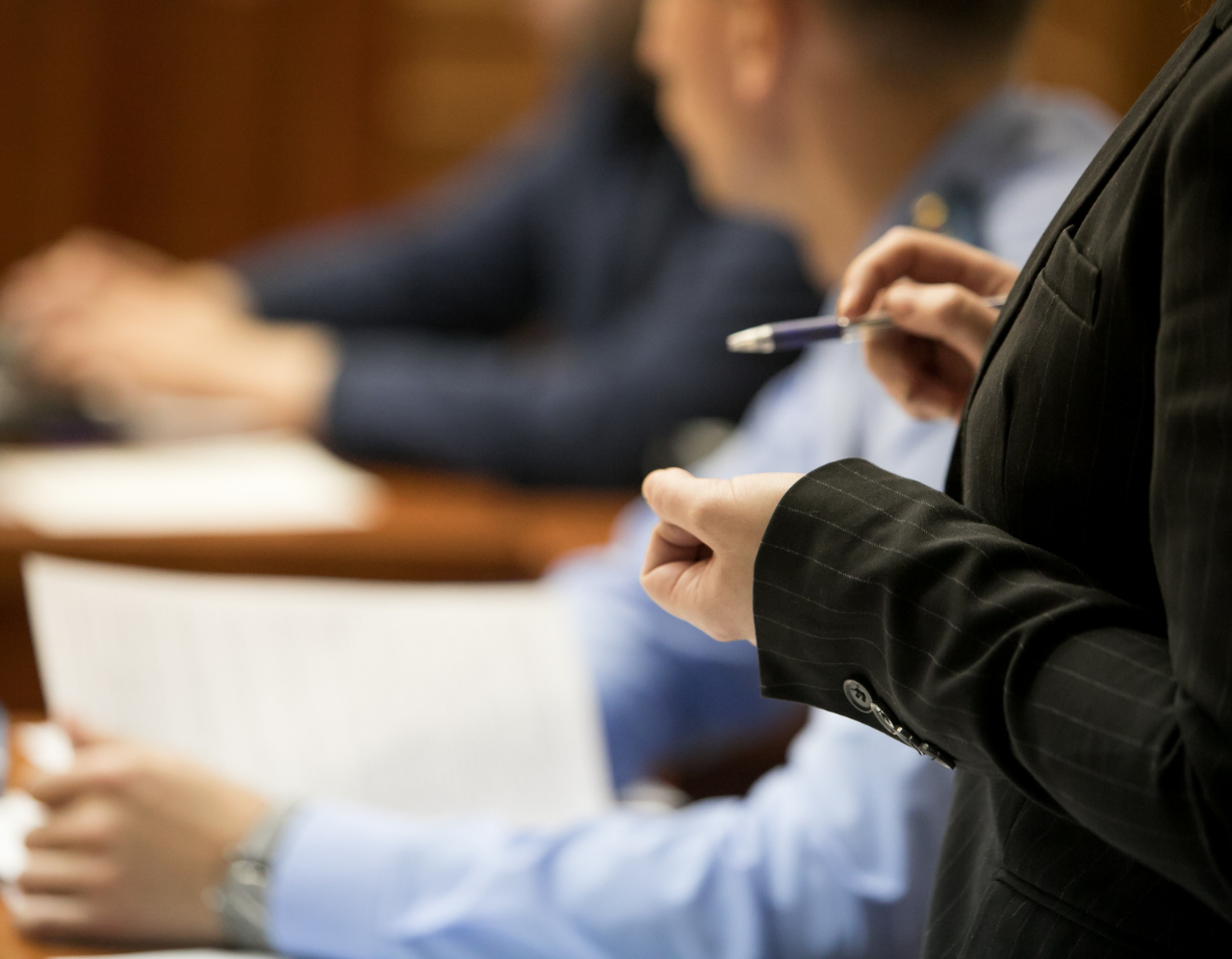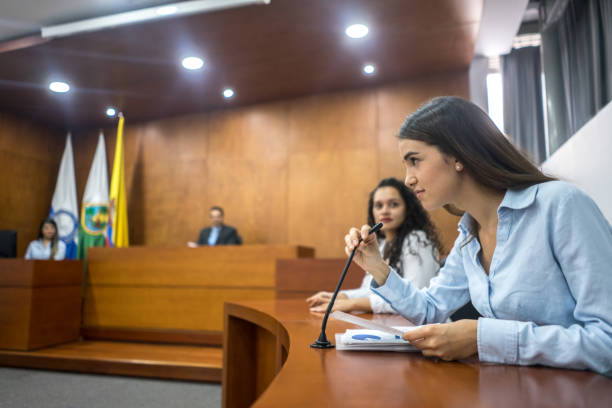Browsing the Intricacies of Trial Presentations: Tips for Seamless Shipment and Compelling Debates
In the realm of lawful proceedings, the art of test discussion stands as a vital factor of success. The intricacies fundamental in test discussions call for a delicate balance of approach, ability, and finesse.

Recognizing Test Objectives
To properly navigate a test, it is vital to have a clear understanding of the objectives that need to be accomplished. Before stepping right into the courtroom, legal teams have to specify their goals and preferred outcomes. These goals serve as guiding concepts throughout the test, shaping techniques and influencing decision-making procedures.
Understanding trial objectives includes a detailed evaluation of the instance, legal criteria, and the customer's benefits. Trial Presentations. It calls for a careful examination of the realities, recognizing vital problems, and anticipating potential challenges. By establishing measurable and particular goals, lawyers can customize their discussions and arguments to align with the desired outcomes
In addition, a clear understanding of test goals allows legal teams to focus on proof, witnesses, and lawful disagreements successfully. It enables the advancement of a meaningful narrative that resonates with the discretionary, strengthening the general instance discussion.

Organizing Proof Efficiently
Having a clear understanding of trial goals lays the foundation for arranging proof effectively in lawful proceedings - Trial Presentations. By straightening the presentation of evidence with the wanted end results of the trial, lawful groups can enhance their debates and enhance their persuasiveness. One essential aspect of arranging proof is categorization. Grouping proof based upon styles or importance to specific legal elements can assist improve the presentation and make complex info a lot more absorbable for the court or court.
One more key component in organizing proof successfully is developing a logical circulation. Offering evidence in a systematic and sequential way can assist build a compelling story that sustains the legal debates being made. Additionally, making use of visual help such as graphes, timelines, or graphs can even more improve the organization of proof and help in clearing up intricate relationships or series of occasions.
Additionally, ensuring that all proof presented is pertinent and admissible to the instance is vital. Unnecessary or inadmissible proof can interfere with the stamina of the debate and possibly damage the reputation of the here and now celebration. For that reason, a careful testimonial and option procedure must be undertaken to include only one of the most legitimately sound and impactful proof in the test presentation.
Crafting Influential Narratives
Crafting compelling stories plays a crucial function in offering influential arguments throughout legal proceedings. A well-crafted story has the power to astound the audience, stimulate emotions, and inevitably sway the choice in favor of today party. When constructing a narrative for a trial presentation, it is vital to establish a clear storyline that highlights bottom lines and attaches them in a systematic manner. Begin by outlining the truths of the case in an engaging way, making sure that the sequence of occasions is easy to adhere to. Present personalities efficiently, offering background info that helps the target market comprehend their motivations and activities. Additionally, incorporating vivid descriptions and engaging language can bring the story to life, making it much more memorable for the judge and jury. By weaving together proof, testimony, and legal disagreements right into a influential and natural story, lawful professionals can effectively promote for their clients and enhance the likelihood of a positive outcome in the courtroom.
Mastering Aesthetic Aids
Effective use of visual help is crucial to enhancing the impact and quality of trial presentations. Visual aids, when made use of tactically, have the power to streamline complicated information, strengthen key factors, and leave a long-term perception on the judge and court. To grasp aesthetic aids in trial presentations, it is essential to make sure that they are clear, succinct, and appropriate to the debates being made.
When integrating aesthetic aids, such as graphes, timelines, photographs, or charts, into a trial discussion, it is necessary to keep them visually appealing linked here yet professional. The visuals need to complement the verbal debates, supplying a visual depiction of the information being talked about without overwhelming the have a peek at this site audience with unneeded details.
Furthermore, experimenting the visual aids beforehand is crucial to guarantee a smooth distribution throughout the test. Familiarizing oneself with the content, transitions, and timings of each visual help can aid maintain the flow of the presentation and protect against technical problems that might occur.
Supplying Impactful Closing Disagreements
An engaging closing debate functions as the conclusion of a trial presentation, enveloping the core narrative and convincing the discretionary in the direction of a desirable decision. To deliver an impactful closing argument, it is crucial to succinctly evaluate bottom lines, highlight the staminas of your situation, and resolve any type of weaknesses in a tactical way. Begin by describing the major disagreements that sustain your customer's placement, stressing why the evidence offered throughout the trial supports your story. It is necessary to develop a sense of communication and clearness, directing the discretionary in the direction of the desired final thought.
Furthermore, incorporating sob story can even more reinforce your closing disagreement. By connecting and humanizing the instance on a personal degree with the decision-makers, you can evoke compassion and understanding, influencing their assumption of the truths provided. In addition, repeating the legal requirements that must be satisfied for a desirable ruling can enhance the credibility of your setting. Ultimately, a well-crafted closing disagreement should leave an enduring perception, compelling the judge and jury to rule in your client's favor.
Verdict
To conclude, understanding trial discussions entails understanding goals, arranging evidence, crafting narratives, utilizing visual help, and delivering impactful closing disagreements. By applying these techniques effectively, attorneys can offer their situation flawlessly and make compelling arguments in the courtroom. It is crucial to browse the intricacies of trial presentations with accuracy and ability to accomplish success in lawful process.
By straightening the presentation of evidence with the wanted results of the test, lawful groups can enhance their debates and enhance their persuasiveness (Trial Presentations). To grasp aesthetic aids in trial discussions, it is important to guarantee that they are clear, concise, and relevant to the debates being made
An engaging closing debate offers as the end result of a trial presentation, enveloping the core story and convincing the judge and court towards a desirable decision. Begin by detailing the primary arguments that sustain your client's placement, highlighting why the evidence offered throughout the trial supports your narrative.In conclusion, mastering trial presentations involves comprehending purposes, go to this site organizing evidence, crafting stories, using visual help, and delivering impactful closing debates.